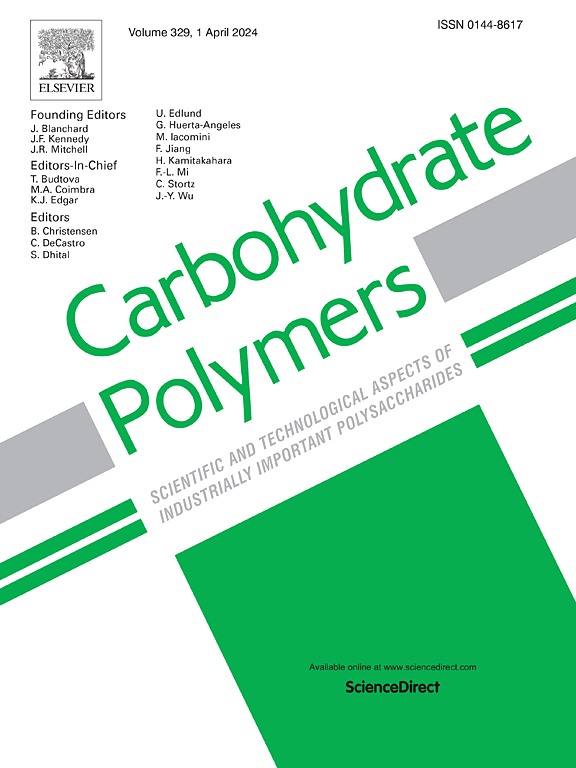Rg3脂质体包埋巯基壳聚糖水凝胶滴眼液序贯给药治疗角膜碱烧伤
IF 10.7
1区 化学
Q1 CHEMISTRY, APPLIED
引用次数: 0
摘要
角膜损伤是炎症、疤痕甚至视力丧失的主要原因。角膜损伤的主要治疗方法是局部滴眼液。然而,由于眼睛保护屏障的限制,常规滴眼液存在生物利用度低、副作用大、疗效有限的缺点。本研究将抗炎药甘草酸二钾(DG)和抗纤维化药人参皂苷Rg3掺入热敏性水凝胶中,研制多功能混合型水凝胶滴眼液(RDTG),协同治疗角膜碱烧伤。巯基壳聚糖和β-甘油磷酸酯通过物理交联和化学交联形成水凝胶网络。DG以游离态分布在水凝胶中,Rg3以脂质体形式掺入水凝胶中。RDTG具有顺序释放的特点。角膜碱烧伤小鼠模型的体内研究证实,RDTG能有效减轻炎症,促进角膜创面愈合,抑制角膜瘢痕。因此,RDTG滴眼液的高效给药为角膜碱烧伤的治疗提供了一条有前景的途径。本文章由计算机程序翻译,如有差异,请以英文原文为准。

Sequential delivery of anti-inflammatory and anti-scar drugs by Rg3 liposome-embedded thiolated chitosan hydrogel eye drops for corneal alkali burn
Corneal injury is a major cause of inflammation, scarring, and even vision loss. The main treatment for corneal injury is local administration of eye drops. However, due to the limitation of the protective barrier of the eyes, conventional eye drops have the disadvantages of low bioavailability, high side effects, and limited efficacy. In this study, the anti-inflammatory agent dipotassium glycyrrhizate (DG) and the antifibrotic agent ginsenoside Rg3 were incorporated into a thermosensitive hydrogel in order to develop a multifunctional hybrid hydrogel eye drops (RDTG) for the synergistic treatment of corneal alkali burn. The hydrogel network was formed by thiolated chitosan and β-glycerophosphate through both physical and chemical crosslinking. DG was distributed in free state in the hydrogel, while Rg3 was incorporated into the hydrogel in the form of liposomes. Furthermore, RDTG showed the characteristic of sequential drug-release. In vivo studies using a mouse model of corneal alkali burn have confirmed that RDTG could effectively reduce inflammation, promote corneal wound healing, and inhibit corneal scar. Therefore, the efficient delivery of RDTG eye drops provided a promising approach for the treatment of corneal alkali burn.
求助全文
通过发布文献求助,成功后即可免费获取论文全文。
去求助
来源期刊

Carbohydrate Polymers
化学-高分子科学
CiteScore
22.40
自引率
8.00%
发文量
1286
审稿时长
47 days
期刊介绍:
Carbohydrate Polymers stands as a prominent journal in the glycoscience field, dedicated to exploring and harnessing the potential of polysaccharides with applications spanning bioenergy, bioplastics, biomaterials, biorefining, chemistry, drug delivery, food, health, nanotechnology, packaging, paper, pharmaceuticals, medicine, oil recovery, textiles, tissue engineering, wood, and various aspects of glycoscience.
The journal emphasizes the central role of well-characterized carbohydrate polymers, highlighting their significance as the primary focus rather than a peripheral topic. Each paper must prominently feature at least one named carbohydrate polymer, evident in both citation and title, with a commitment to innovative research that advances scientific knowledge.
 求助内容:
求助内容: 应助结果提醒方式:
应助结果提醒方式:


